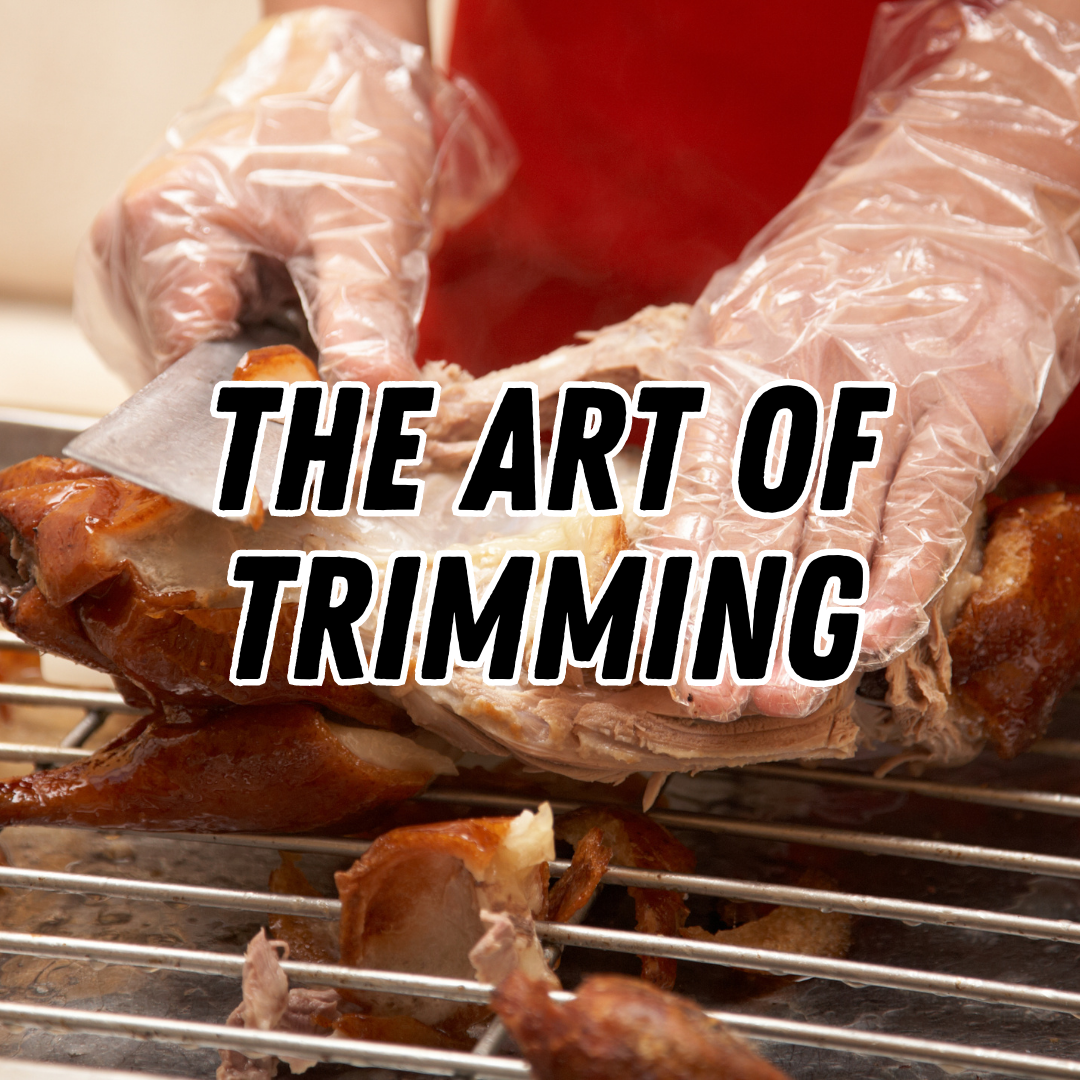Matching meat with complementary flavours is essential in the kitchen for producing dishes that leave lasting impressions. Understanding how different cuts of meat interact with various flavours allows chefs and home cooks alike to elevate their cooking to new heights.
This guide will delve into the significance of meat and flavour pairings and explore classic combinations that work harmoniously together.
Whether you're a seasoned chef or a culinary enthusiast, these tips will help you create mouth-watering dishes that leave a lasting impression on your guests.
Understanding Classic Meat and Flavour Pairings
Regarding the art of meat pairing, certain classic combinations have stood the test of time, creating delightful flavour experiences that have become culinary traditions.
Let's explore some of these timeless pairings and understand why they work harmoniously.
1. Steak and Red Wine - A Match Made in Gastronomic Heaven
- The rich and robust flavours of a perfectly seared steak complement the complex tannins and acidity of red wine, creating a symphony of tastes on the palate. Whether a juicy ribeye with a bold Cabernet Sauvignon or a tender filet mignon with a smooth Merlot, the marriage of steak and red wine is a classic that never disappoints.
2. Pork and Apples - A Sweet and Savoury Fusion
- The savoury, tender goodness of pork dishes beautifully contrasts with the sweetness and tartness of apples. From succulent pork chops with apple chutney to slow-roasted pork belly with caramelized apples, this pairing offers a delightful balance of flavours that tantalizes the taste buds.
3. Lamb and Rosemary - A Timeless Union of Aromas
- The earthy and herbaceous notes of rosemary perfectly complement lamb's rich and tender taste. Whether it's a fragrant rosemary-crusted rack of lamb or a hearty lamb stew infused with aromatic herbs, this pairing showcases the artistry of blending flavours to create a memorable dining experience.
4. Chicken and Lemon - A Zesty Twist to Classic Comfort
- The bright and citrusy essence of lemon adds a refreshing twist to tender and mild chicken dishes. From tangy lemon herb roast chicken to zesty lemon pepper grilled chicken, this combination brings a burst of flavour that keeps chicken dishes far from ordinary.
5. Seafood and Garlic - Elevating Oceanic Delicacies
- The spicy and bold taste of garlic enhances the natural sweetness of the seafood, creating a delectable fusion of flavours. From garlic butter shrimp to garlic-infused grilled fish, this pairing elevates oceanic delicacies to new heights of culinary delight.
With this knowledge in hand, let's explore how different meat cuts can contribute to complementary flavour combinations.
Leveraging Knowledge of Different Meat Cuts
Understanding the characteristics of various meat cuts and how they interact with flavours
Knowing the unique characteristics of different cuts is essential for meat pairings. Each cut brings distinct textures, flavours, and cooking requirements to the table. For instance, tenderloin offers a delicate buttery texture and pairs wonderfully with light and subtle seasonings.
Ribeye's rich marbling, on the other hand, gives it a powerful, savoury flavour that complements its intense and robust flavour qualities.
By understanding these nuances, you can make informed decisions to create harmonious meat and flavour combinations that delight the palate.
Tips for selecting the right cuts to enhance specific taste sensations
Choosing the right cut of meat may make or break a well-balanced and tasty dish. For a tender and juicy result, opt for cuts like ribeye, which boast abundant marbling that enhances the meat's natural juices during cooking. Consider tenderloin or sirloin if seeking a leaner option with a more delicate taste. By matching the characteristics of the cut with the desired taste sensations, you can elevate the overall dining experience and cater to varying preferences.
Demonstrating how marbling, texture, and cooking methods impact the pairing process
Marbling, texture, and cooking methods play pivotal roles in meat pairing. Marbling, the intramuscular fat within the cut, adds richness and tenderness, amplifying the flavours. Different textures, ranging from tender to chewy, offer diverse mouthfeel experiences.
Understanding how cooking methods, such as grilling, roasting, or braising, influence the meat's taste and texture empowers you to tailor the pairing to perfection. For instance, grilling a well-marbled ribeye imparts a smoky aroma, while slow-braising a chuck roast creates a fork-tender delight with intensified flavours.
Creating Complementary Flavour Combinations
When creating mouth-watering dishes, the art of meat pairing becomes truly exciting. Combining different cuts of meat with a wide array of flavours can elevate your culinary creations to a whole new level. Let's explore some tried-and-true techniques for crafting complementary flavour combinations:
Balancing Sweet and Savoury
- Pair succulent pork chops with a sweet and tangy apple glaze for a delightful contrast of flavours.
- Enhance the umami of a juicy ribeye steak by serving it with a rich and savoury mushroom sauce.
Embracing Spices and Herbs
- Marinate a tender chicken breast with aromatic rosemary and zesty lemon for a burst of freshness.
- Spice up a classic beef stew with a blend of cumin, paprika, and coriander to add depth and complexity.
Exploring Regional Influences
- Combine spicy chorizo with capsicum to taste Spain in a vibrant paella.
- Experience the bold flavours of India by pairing tender lamb with a fragrant blend of curry spices.
Don't Forget the Wine
- Pair a succulent filet mignon with a robust red wine like Cabernet Sauvignon to complement its richness.
- Match a delicate seafood dish with a crisp, refreshing white wine like Sauvignon Blanc.
Balance Textures and Temperatures
- Contrast a crunchy breadcrumb coating with a creamy mushroom sauce for a delightful textural interplay.
- Serve a warm, hearty beef stew with a cool, refreshing cucumber salad for a well-rounded experience.
Tips for Experimenting with New Meat Pairings
As a food enthusiast, I've found that experimenting with new meat pairings can lead to delightful culinary experiences. Here are some tips to help you embark on your flavourful journey:
- Embrace the Unfamiliar: Don't be afraid to try meats you haven't cooked before. Whether it's game meats like venison or exotic options like kangaroo, exploring new flavours can be an exciting adventure.
- Consider Texture: Pairing meats with varying textures can create a delightful contrast in your dishes. For example, tender cuts like filet mignon can be balanced with crispy bacon or crunchy nuts.
- Explore Regional Cuisines: Different cultures have perfected their meat and flavour combinations. Look into cuisines from around the world for inspiration. For instance, Indian cuisine offers a rich array of meat and spice pairings that can tantalize your taste buds.
- Balance Boldness: Aim for a balanced approach when experimenting with bold flavours. If you're incorporating strong spices, pair them with meats that can hold their own, such as a juicy ribeye.
- Play with Marinades and Rubs: Marinades and rubs are an excellent way to infuse meats with exciting flavours. Try experimenting with citrusy marinades for fish or herb-infused rubs for poultry.
- Wine and Dine: Wine can elevate the flavours of your meat dishes. Experiment with different wines to find those that complement and enhance the taste of your chosen meats.
- Seasonal Pairings: Use seasonal produce to complement your meat choices. For instance, pairing a succulent roast with fresh summer vegetables can create a harmonious and satisfying meal.
- Document Your Experiments: Keep a culinary journal to record your experiments and their outcomes. This will help you remember successful pairings and learn from any less successful attempts.
- Seek Inspiration from Chefs: Follow renowned chefs and food bloggers on social media or read their cookbooks for inspiration. They often share unique meat pairings and creative recipes.
- Trust Your Palate: Ultimately, trust your taste buds and instincts. Your preferences are unique, and experimenting will help you discover meat pairings that resonate with your palate.
Remember, there are no strict rules for experimenting with meat pairings. Embrace the process and have fun with your culinary exploration!




